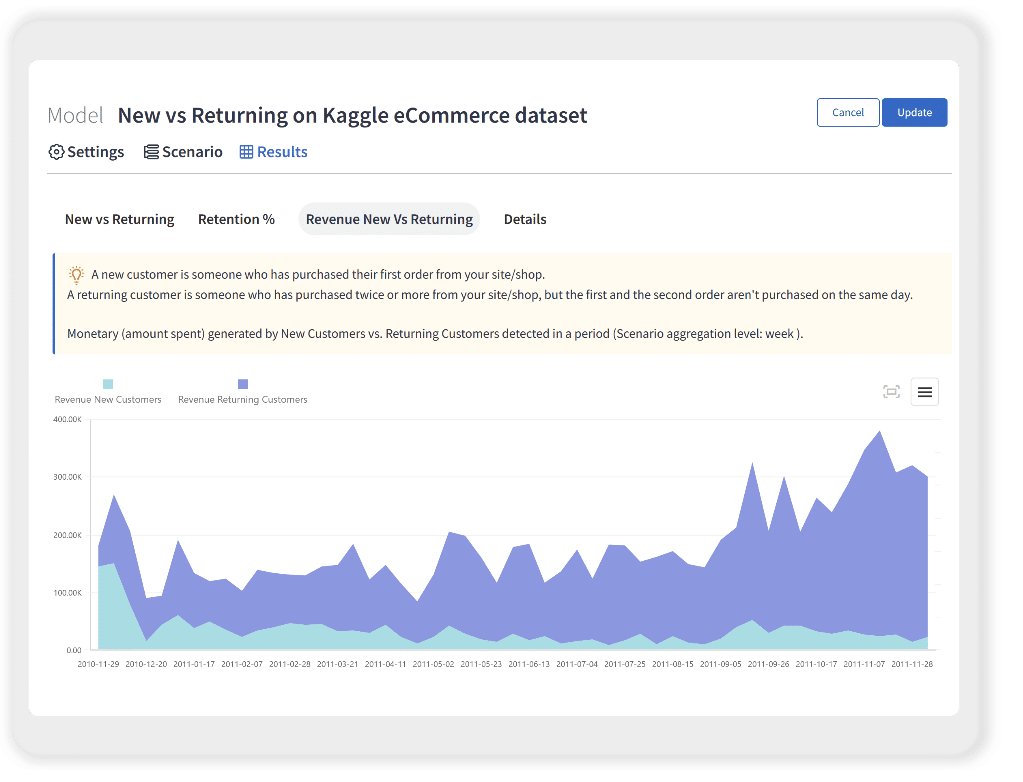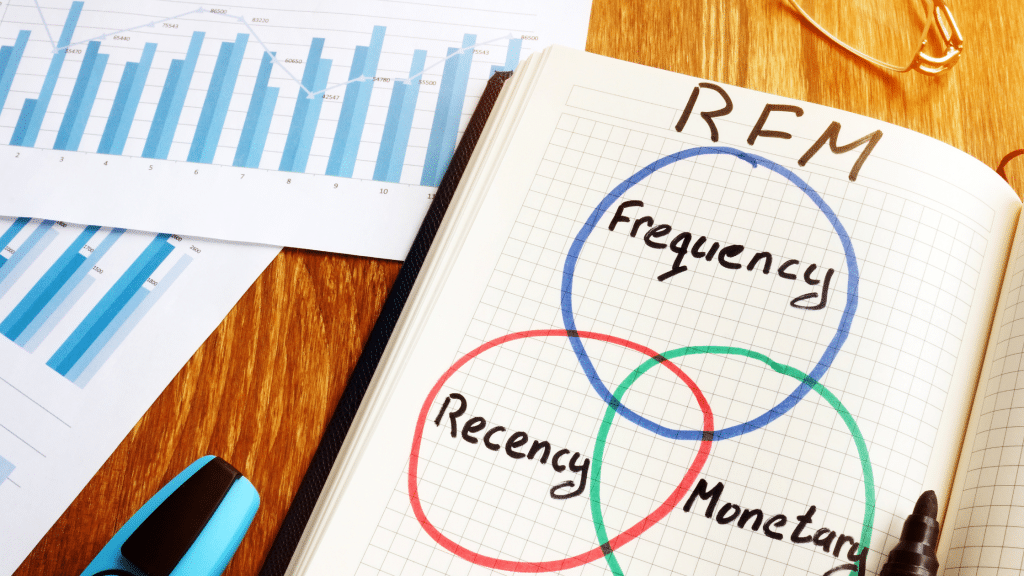Introduction
New vs returning customers? Which customer segment should your e-commerce or retail business focus on? Whether you’re in e-commerce or retail, your customers are your business’ priority. New and returning customers play key roles in growing your business. It is critical to understand each customer segment’s role and value. Your business needs to adopt targeted strategies for new customers and returning customers. As a business owner, you must get the balance right. As a business, you need to deliver targeted strategies that grow your new customer base. You also need to focus on how to turn new customers into returning customers.
Moreover, you need to keep your returning customers coming back. Using predictive analytics, you can build well-targeted strategies. New customers and returning customers are equally important. One customer segment has a definitive edge when it comes to your business growth. Knowing where to focus your efforts requires effective customer segmentation. Let’s outline how to manage returning customers vs new ones.
What is customer segmentation?
You need to know who your new customers and returning customers are. Knowing who your new visitors and new users are for your e-commerce store is important. Then you can build targeted strategies to serve new vs returning users. New vs returning users both play an important role in business growth. An effective customer segmentation strategy helps you effectively target each customer segment.

Why is customer segmentation important?
Adopting a customer segmentation strategy enables your business to identify valuable customer segments.
For new customers, you can analyze them by:
- Acquisition channel: This may include a marketing channel, such as organic search or paid advertising. Acquisition channels can also be referrals, or word of mouth. Knowing their acquisition channel helps you to understand how they were attracted to buy from your business. If a new customer visits your e-commerce store using their mobile device is also important to know. Your website’s Google Analytics can tell you key information about your customer’s experience on your e-commerce store. Don’t forget to check the bounce rate.
- Purchase behavior: Purchase behavior includes the type of product they bought, the order value, the average order value, and similar metrics. Knowing their purchase behavior enables you to predict their future buying potential. Understanding your business’ level of customer satisfaction is important.
- Customer experience: Other metrics, like how much time customers spent on your website, or your bounce rate, can also help you optimize your operations to attract new business. Your website bounce rate, for instance, can tell you a lot about how to optimize your website.
For returning customers, you can analyze them by:
- Frequency: Frequency tells you how often a customer buys from you. Frequency can also tell you if they’re first-time repeat buyers, and their value orders.
- Recency: Recency tells you when a customer last bought from your e-commerce or retail store. Using data analytics, you can further segment your recent customers into active, dormant, or lapsed.
New vs returning customers and targeted marketing
Now that you understand your new vs returning users, you can develop targeted marketing campaigns. You can personalize their customer experience, optimize your resources, and generate more business.

Returning customers
When your business has returning customers, they’re likely to spend 67% more on average, and need less marketing directed towards them. Returning customers quickly become brand ambassadors, and don’t forget their favorite store. Returning customers represent the future of your e-commerce or retail store. Returning customers are the customers who have made more than one purchase from your e-commerce or retail store. Returning customers are 27% more likely to buy from you again, after their first purchase. Retaining an existing customer costs you 5 times less money and effort than it takes to acquire a new customer. Here’s why returning customers are invaluable to your e-commerce or retail store:
- Returning customers spend more money on your products and services, when compared with new customers. Returning customers spend 300 times more than new customers. Your customer retention rate is a key metric for your business.
- You have a 65% chance of persuading a returning customer to make a new purchase. Investing your marketing efforts in returning customers makes sense, as only 13% of your future customers will buy from you.
- Returning customers promote your business.
- 80% of your business revenue comes from 20% of your customers. Returning customers contribute a substantial amount towards that 80% of your revenue. Customer loyalty is critically important for your business. Don’t forget to engage with your returning customers on social media too.
- How you treat returning customers has a direct effect on your business’ ability to attract new customers. Customer satisfaction is very important for your business.
- Returning customers save you time, effort, and money. New customer acquisition costs more than customer retention.
How should I manage returning customers?
Developing targeted marketing campaigns for your returning customers is key. Here are a few ways you can, using the power of customer segmentation, retain your returning customers:
- For high-spending returning customers: Offer your high-spending returning users exclusive discounts, early sale access, and product launches. Reward your loyal customers.
- For lapsed customers: Trigger win-back marketing campaigns for your lapsed customers. Personalized discounts and product reminders are good strategies for this.
- With retention campaigns and loyalty programs: Offer your returning customers discounts or special deals. This requires less marketing spend from you, but boosts returning customer retention. Returning customers generate a higher lifetime value for your business. Loyalty programs increase Customer Lifetime Value (CLV) by 79% in 3 months. Your return customer rate keeps your business’ momentum.
- Create a marketing campaign, email campaign, or use a dedicated marketing channel to focus on engaging with your returning customers. Email campaigns have proven highly effective in keeping returning customers happy to shop from your business again.
- Add convenience to their customer experience: For repeat customers, implement expedited checkout systems, and provide personalized product recommendations.

New customers
New customers bring new energy and revenue into your business. New customers allow you to turn them into returning users. Nurturing new customers into becoming returning customers is the goal. Laying the foundation for a positive experience with your new customers is key. New customers and new visitors to your website help with revenue growth. You must spend 16 times more money on new customer acquisition, compared to returning users. 60-80% of customers who bought from your business might not return. A one time customer also exists. That’s why you must build targeted marketing strategies to attract new business. For new users, the goal is to turn them into a returning customer. New customers are important to your business because:
- New customers form the foundation of your entire customer base. Every returning customer you have, was once a new customer.
- New customers build brand recognition for your e-commerce or retail store.
- New customers give you key insights into what you can improve on to attract even more new customers.
- New customers often replace old customers who have moved on from buying from you.
- Every one time customer could become a returning customer.
- Understanding your conversion rate for new customers is key to turning them into loyal customers, through effective marketing efforts.
- New customers are critical for ensuring business growth.
How should I manage new customers?
Your marketing strategy for new customers should focus on turning them into returning customers. Here are a few ways you can turn new customers into returning customers:
- Focus your marketing efforts on channels that yield the most valuable new customers. At the same time, watch your Customer Acquisition Cost (CAC) across all channels.
- Create welcome email campaigns that educate your new customers about your business.
- Personalize your new customers’ journey to their next sale. Offer new users personalized product recommendations, based on their first purchase. You can offer discounts, or similar benefits, to encourage a second purchase. Use marketing campaigns to encourage new users to become returning users.
- Make it easy to buy from you. That is a key way to turn a new user into a returning customer.
- Keep the connection alive, with regular, targeted communications. Stay in touch with your new customers using an email campaign or personalized communication. Social media is also a key tool for staying in touch with new customers and returning customers.
- Ask your one time customers about their first experience of your business. Feedback programmes directed at your new customers can help you improve your operations. Feedback programmes can create customer incentives to turn them into returning customers. This will help you monitor customer satisfaction too.
Predictive analytics helps you manage new customers and returning customers
Predictive analytics models help you manage new customers and returning customers. With predictive analytics, you can segment your customers, tailor your marketing campaigns, and improve your operations. Important note: Get smart and intuitive, just like your new customers and returning customers.






